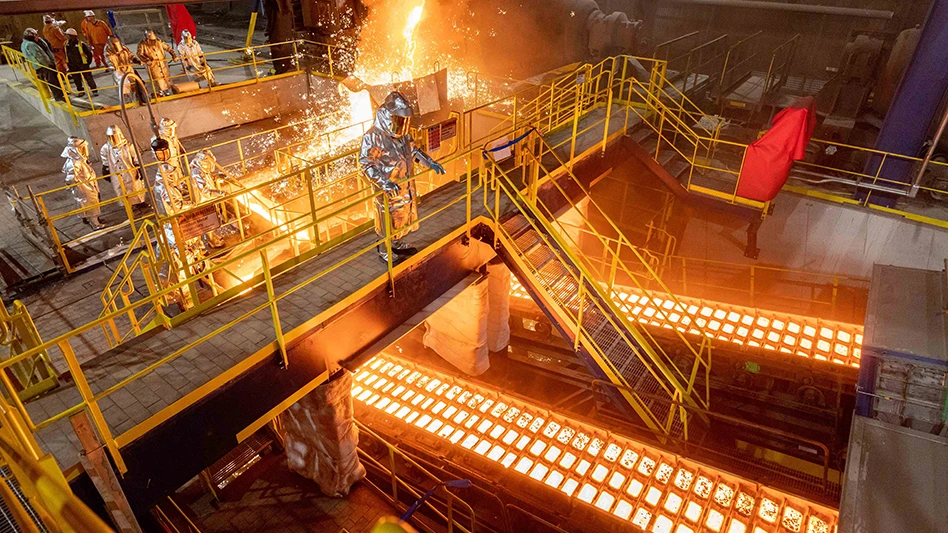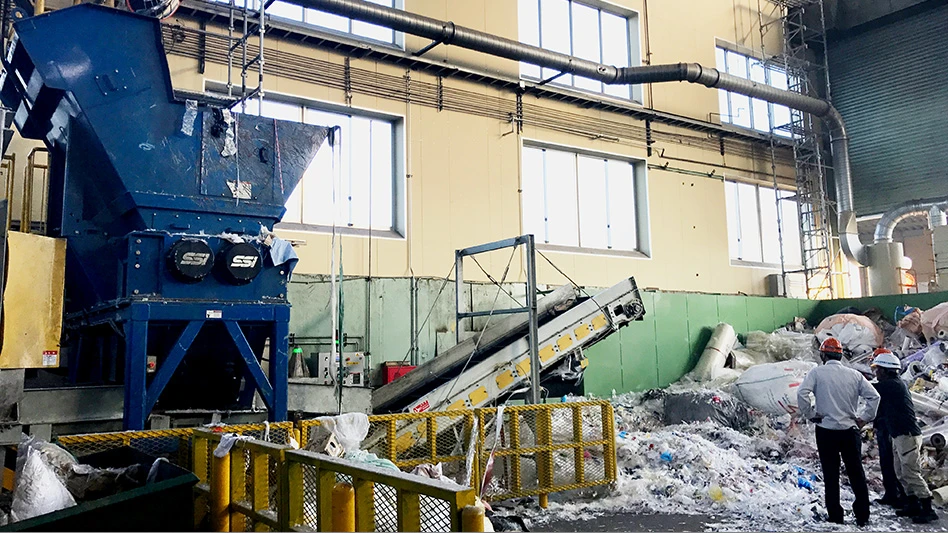The U.S. aluminum industry directly employs more than 166,000 workers, with employment declining slightly between 2018 and 2020, according to research conducted by economic research firm John Dunham & Associates and release by the Aluminum Association, Arlington, Virginia, Oct. 22. The study also found that the industry generates more than $70 billion in economic output and indirectly generates an additional $102 billion economic output. In total, the U.S. aluminum industry supports nearly 660,000 direct, indirect and induced jobs and nearly $172 billion in total economic output, according to the study.
Overall employment in U.S. aluminum has held largely steady for most of the past decade, though most sectors lost jobs between 2018 and 2020, the study notes. These shifts were offset by an increase in jobs in the primary aluminum segment in the 2020 report, which represent about 3 percent of U.S. aluminum jobs overall.
The secondary aluminum sector is estimated to employ 8,691 people in 2020, while the primary sector is estimated to employ 4,829, according to the study. These figures represent an increase of 54.2 percent from 2018 to 2020 and a 62.2 percent decline from 2013 to 2020 in the primary sector, while employment in the secondary sector decreased 7.7 percent from 2018 to 2020 and by 7.8 percent from 2013 to 2020.

“This report reflects an industry that has proven resilient despite numerous global trade and other challenges in recent years,” says Tom Dobbins, president and CEO of the Aluminum Association, in a news release about the study. “Like all segments of the economy, aluminum companies in the U.S. continue to grapple with the ongoing economic disruption of COVID-19 which is having a serious impact on demand and jobs.”
While the initial economic impact report was completed in March of this year, subsequent modeling shows the impact of COVID-19 on industry jobs and economic output. The latest modeling through August 2020 suggests that direct industry jobs and economic output have likely declined about 11 percent since the study was originally completed, the Aluminum Association says.
The latest available data show a topline domestic aluminum demand decline of about 19 percent year-over-year through July. Recent net new orders data for aluminum have shown some signs of improvement, though orders remain off about 10 percent year over year through September. The model is derived using a variety of government and industry data sources to estimate changes in employment for each sector of the economy that uses aluminum as a major input.
The Aluminum Association says it plans to periodically update the COVID impact model and the new data will be available in real-time at www.aluminum.org/economy.
“Like all industries, the U.S. aluminum sector faces significant challenges but also major opportunities in the current economic environment,” Dobbins says. “We are confident that consumer and company preferences for recyclable packaging material, efficient and lightweight vehicles and sustainable infrastructure will continue to drive demand for aluminum. We look forward to working with policymakers and other industry stakeholders on issues like trade, infrastructure, energy and the environment in the years ahead.”
This report is an update of studies completed in 2013, 2016 and 2018. Data from prior years’ studies have been reviewed and updated for accuracy, providing the most up-to-date and comprehensive information on the U.S. aluminum industry’s economic impact, the Aluminum Association says.
The report also finds that workers directly employed by the U.S. aluminum industry earn nearly $13 billion in wages and benefits, while indirect and induced employment creates an additional $32 billion in wages and benefits. When all employment supported by the industry is taken into account, these jobs generate nearly $16 billion in federal, state and local taxes.
The 2020 Economic Impact of the Aluminum Industry study was completed using standard econometric models first developed by the U.S. Forest Service and now maintained by IMPLAN Inc. The report is based on data provided by Infogroup, the federal government and the Aluminum Association.
For the purposes of the report, the aluminum industry is defined to include alumina refining; primary aluminum smelting; secondary aluminum production; manufacturing of aluminum sheet, plate, foil, extrusions, forgings, coatings and powder; aluminum foundries; and metals service centers and wholesalers.
The complete study, including an interactive map with economic contribution breakdowns by state and congressional district, is available at www.aluminum.org/economy.
Latest from Recycling Today
- Biden officially blocks Nippon Steel’s acquisition of US Steel
- Highland Sanitation awarded solid waste and recycling contract in Wanamingo, Minnesota
- Ecobat gathers support for California permit renewal
- RecyclX platform designed to provide materials transparency
- Turkish mills sampled wide scrap market in 2024
- GLE Scrap Metal acquires interest in Mallin Cos.
- 2024 marks strong year for Van Dyk
- Recycled metal portrayed as former dictator’s fiefdom





